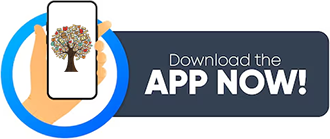Notes For All Chapters – Science Curiosity Class 8
Health: The Ultimate Treasure
1. What is Health?
- Health is not only about not being sick.
WHO Definition: Health = complete physical, mental, and social well-being.
Healthy person:
- Can work efficiently.
- Adjusts well with friends, family, society.
- Copes with difficult situations.
Example: A boy felt lonely, used more phone and social media, got headaches and sleep problems → showed how emotions affect health.
Ayurveda: Health is balance of body, mind, and surroundings.
- Daily routine (dinacharya).
- Seasonal routine (ritucharya).
- Fresh food, yoga, meditation, mindfulness.
2. How Can We Stay Healthy?
2.1 Healthy Lifestyle
- Eat balanced diet (fruits, vegetables, whole grains).
- Avoid oily, sugary, junk foods.
- Be physically active (sports, walking, cycling).
- Limit screen time.
- Spend time outdoors and in nature.
- Sleep properly.
- Practice yoga, pranayama, meditation.
- Avoid tobacco, alcohol, drugs.
2.2 Clean Environment
- Clean surroundings prevent diseases.
- Dirty areas breed mosquitoes, flies → infections.
- Air pollution → cough, asthma.
- AQI (Air Quality Index) shows air quality.
- Safe water reduces waterborne diseases.
Mental health matters too:
- Loneliness, stress → sickness.
- Family time, laughter, friendship → keep mind healthy.
3. How Do We Know We Are Unwell?
- When body doesn’t function normally → we feel unwell.
- Symptoms (felt): pain, tiredness, dizziness.
- Signs (seen/measured): fever, rash, swelling, high blood pressure.
- Doctors use both to diagnose disease.
4. Diseases: Causes and Types
4.1 What is Disease?
- Disease = condition disturbing normal functioning of body or mind.
4.2 Types of Diseases
1. Communicable diseases
- Caused by pathogens (bacteria, viruses, protozoa, fungi, worms).
- Spread person to person.
- Examples: Cold, flu, chickenpox, measles, TB, cholera, typhoid, malaria, dengue, COVID-19.
Spread by:
- Air (coughing, sneezing).
- Direct contact (touch).
- Indirect contact (sharing items).
- Contaminated food/water.
- Vectors (mosquitoes, flies).
2. Non-Communicable diseases (NCDs)
- Do not spread from person to person.
- Caused by lifestyle, poor diet, environment.
- Examples: Diabetes, cancer, asthma, obesity, high blood pressure.
- Include deficiency diseases: anaemia (iron deficiency), goitre (iodine deficiency), scurvy (vitamin C deficiency).
- Many are chronic (long-lasting).
5. Communicable Diseases – Examples
5.1 Airborne Diseases
- Common cold/flu: virus; symptoms = runny nose, cough, fever; prevention = handwashing, covering mouth.
- Chickenpox: virus; fever, rashes, blisters; prevention = isolation, vaccination.
- Measles: virus; sore throat, red rash; prevention = hygiene, vaccination.
- Tuberculosis (TB): bacteria; cough, fever, weight loss; prevention = cover mouth, vaccination, hygiene.
5.2 Food & Waterborne Diseases
- Hepatitis A: virus; fatigue, jaundice; prevention = boiled water, vaccination.
- Cholera: bacteria; diarrhoea, dehydration; prevention = hygiene, clean food/water.
- Typhoid: bacteria; fever, headache, diarrhoea; prevention = hygiene, boiled water, vaccination.
- Ascariasis (worms): worms in intestine; diarrhoea, weight loss; prevention = hygiene, cooked food, boiled water.
5.3 Vector-Borne Diseases
- Malaria: protozoa spread by mosquitoes; fever, chills, sweating; prevention = nets, repellents, mosquito control.
- Dengue: virus spread by mosquitoes; fever, joint pain; prevention = nets, repellents, avoid stagnant water.
6. Non-Communicable Diseases – Examples
- Obesity: due to overeating, no exercise; prevention = healthy diet + activity.
- Diabetes: frequent urination, tiredness, weight loss; prevention = diet control, exercise.
- High Blood Pressure: silent disease; controlled by lifestyle.
- Cancer, Asthma: caused by environment, smoking, pollution.
7. Prevention and Control of Diseases
7.1 Immunity
- Body’s natural defense against disease.
- Strong immunity → fewer illnesses.
7.2 Vaccination
- Provides acquired immunity.
- Made from weakened/dead germs or harmless parts.
- Examples: Polio, measles, tetanus, hepatitis vaccines.
- Edward Jenner (1700s): first smallpox vaccine.
- India’s traditional method: Variolation (before modern vaccines).
- India today: major vaccine producer; played key role in COVID-19 vaccines.
7.3 Treatment
- Antibiotics: kill bacteria, not viruses.
- Alexander Fleming (1928): discovered penicillin.
- Misuse causes antibiotic resistance → bacteria survive despite treatment.
- Use antibiotics only as prescribed.
7.4 Traditional Medicine Systems
- Ayurveda, Siddha, Unani → natural herbs, oils, diet, lifestyle.
- Focus on balance and prevention.
8. Important Scientists
- Edward Jenner: First vaccine (smallpox).
- Alexander Fleming: First antibiotic (penicillin).
- Dr. Kamal Ranadive: Studied cancer, linked hormones/viruses with lifestyle.
- Dr. Maharaj Kishan Bhan: Developed Rotavirus vaccine (for diarrhoea in children).
9. Snapshots (Key Points)
- Health = complete physical, mental, and social well-being.
- Lifestyle + environment affect health.
- Diseases are of 2 main types:
- Communicable (infectious).
- Non-communicable (lifestyle/deficiency).
- Symptoms = what we feel; Signs = what we can see/measure.
- Immunity protects us; vaccines build it stronger.
- Antibiotics cure bacterial infections, not viral ones.
- Misuse of antibiotics → resistance.
- Prevention = better than cure → hygiene, clean environment, vaccination, healthy living.

You are the best app
I love this website and application. I have been taking all my notes and NCERT solutions from here since Class 7. Now I am in Class 8, and I topped my Class 7 final examinations. Many thanks to eVidyarthi!
Thanks
Thankyou
It’s helpful
so good exelent
Sooo goooodd
Give a notes of sst exploring beyond socity